Este post também está disponível em:
Português
English
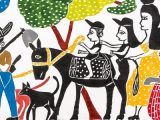
Cordel literature and xylography, a wood engraving technique, were brought by the Portuguese, but gained personality in Brazil and became a hallmark of the Northeast.
The work of the artist J. Borges unites these two techniques and is recognized worldwide.
It was in the world of the sertão that J. Borges, cordelist and engraver, was born, was a boy and was raised among the writings inside out. “Here in the Northeast because of the purchasing power down there, many artists were created.
Everyone had to live and had no job, had nothing, most did not even know how to write. And then he went on to write cordel, to make engravings, clay dolls”, says the artist.
In the 1940s, in the sertão there was no radio, television didn’t even exist in Brazil, newspapers didn’t reach that far, bookstores were a name nobody knew.
A time of weak writing in the sertão, that’s how the cordel in the fairs, in the villages, started to bring news, love stories and humor. Many people learned to read with cordel literature.
“I grew up on the farm and the only information was given by the cordel that my father bought at the fair for us to read, the turn of the train, the turn of the truck from Gravatá, the flood of Maceió, the lambs came out my father took.
That was our journalism. I understood how to buy and sell the cordel, through the squares, through the fairs, I got along very well. That’s where the need to illustrate arose. Without the illustration in the cordel, it wouldn’t sell. If I just put the words, people wouldn’t buy it”, he explains.
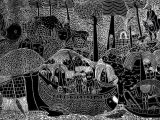
Today the cordel does not bring more news, nor news for the sertanejo people, rest on the shelves the old man who deceived the devil, the girl who became a snake, the naked dick, the great debate of lampião with são pedro, the misfortune of the greedy horn.
J. Borges has not lived on cordel for a long time, to illustrate the old stories he learned to do woodcut by himself: “Woodcut is engraving on wood and the woodcutter is the woodcutter”.
That is his great art today. In the most artisanal way, he develops his craft and, in cinnamon-colored wood, sculpts the stories of the Northeast hinterland, the landscapes, the animals, the customs of those people.
He sells engravings all over Brazil and often gives classes abroad.
Video about Xylography
The following video shows, step by step, how to make woodcuts, this ancient technique that besides being beautiful, is a source of income for many of our popular artists.
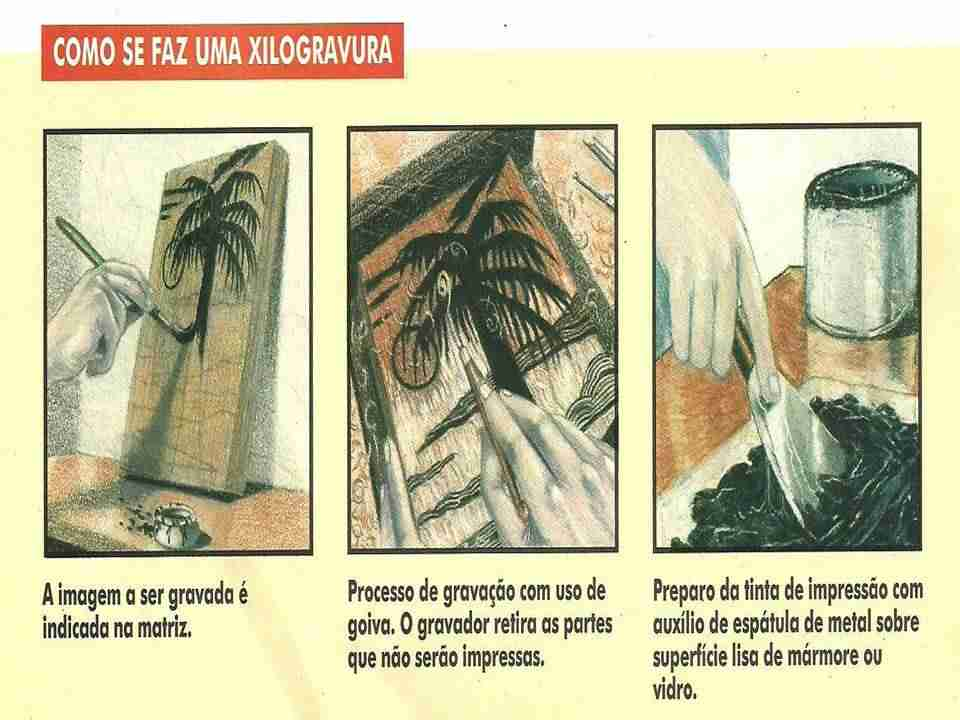

Xilogravura - como se faz?
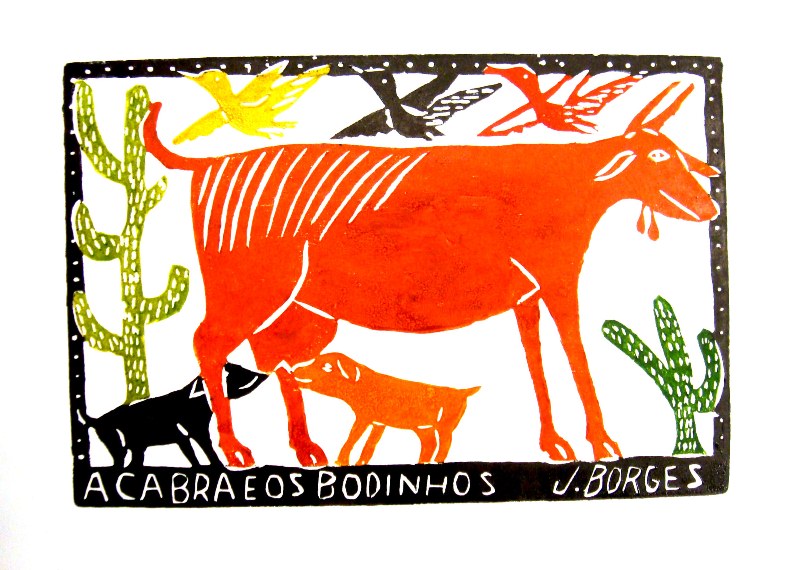
Xilogravura - Literatura de Cordel
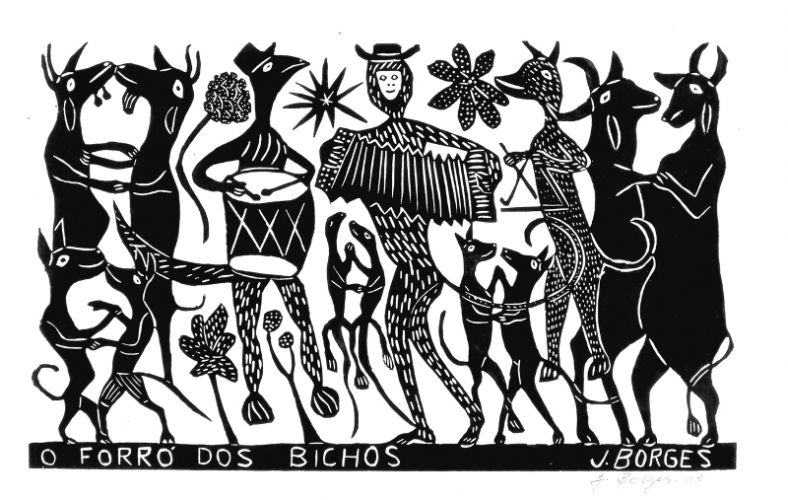
Xilogravura - Cordel07:40
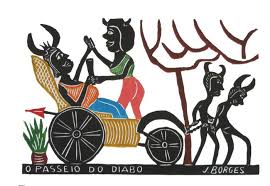
Xilogravura - Ferramentas13:26
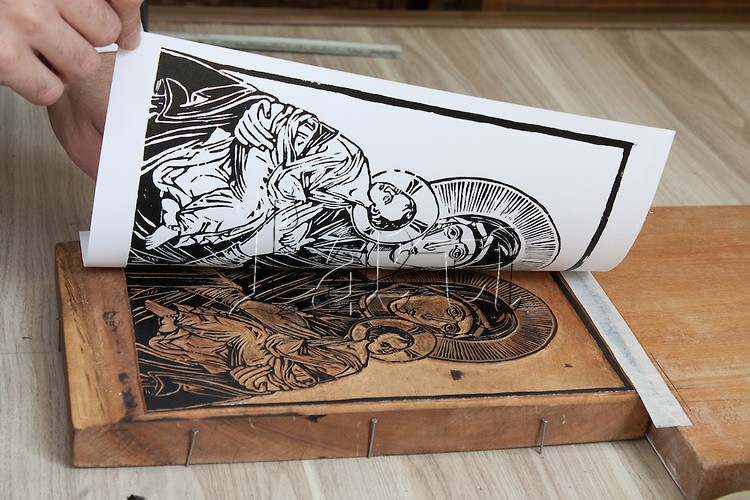
Impressão em xilogravura na madeira
Cordel and Xylography, a partnership that has lasted more than a century! Xylographers and Cordelists are sides of the same coin, indispensable in the production of leaflets.
This technique, which became so popular in the Northeast, present on the covers of the cordel booklets, still gains fans and admirers of the art, thanks to the cheap cost and simplicity of execution.
What is xylography?
Xylography means wood engraving.
It is an ancient technique, of Chinese origin, in which the craftsman uses a piece of wood to carve a drawing, leaving in relief the part that he intends to make the reproduction.
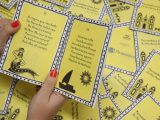
He then uses ink to paint the relief part of the drawing.
In the final phase, a type of press is used to exert pressure and reveal the image on paper or other support.
An important detail is that the drawing comes out the other way around, which requires more work from the craftsman.
There are two types of woodcut: wire woodcut and top woodcut, which are distinguished by the way the tree is cut.
In wire woodcutting (also known as vein woodcutting or lying woodcutting) the tree is cut in the direction of growth, lengthwise; in top woodcutting (or standing woodcutting) the tree is cut across the trunk.
Woodcut is very popular in the Northeast region of Brazil, where the most popular Brazilian woodcutters (or xylographers) are located.
Woodcuts were often used to illustrate texts of cordel literature.
Some cordelists were also woodcutters, for example, the Pernambucan J. Borges (José Francisco Borges).
Woodcut has also been engraved on tiles, reproducing smaller drawings. This is one of the techniques that the Pernambucan artisan Severino Borges has used in his work.
See also Popular Art in the Northeast
History of xylography
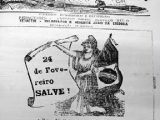
Xylography is a technique for reproducing images, and also texts, using a wooden matrix.
The matrix is carved by hand with a burin or other cutting instrument. The high parts that will receive the ink are the ones that will print the image on the paper.
The oldest engraving was found in China, it was a prayer and dates back to 868. Egyptians, Indians and Persians used it to print fabrics.
Later, it was used as a stamp on sheets of paper for printing Buddhist prayers in China and Japan.
In the West, it began to be used in the late Middle Ages (second half of the 14th century), when it was employed on playing cards and sacred images. In the 15th century, wooden boards were engraved with text and images for printing books, which until then had been written and illustrated by hand. With Gutemberg’s movable type, woodcuts came to be used only for illustrations.
In Brazil, woodcut printing arrived with the move of the Portuguese Royal Family to Rio de Janeiro.
The first woodcutters appeared after 1808 and spread mainly to the capitals, producing playing cards, illustrations for advertisements, books and periodicals, labels, etc.
The first or oldest printed cordel pamphlet known is by Leandro Gomes de Barros (1865-1918).
The woodcut was used for a long time for illustrations of periodicals such as newspapers. An example of this is the Jornal Mossoroense (RN).
One of the oldest active newspapers in Brazil, it contained woodcuts as a vignette and illustrations, prepared by its owner João da Escóssia, considered for this reason, the first potiguar woodcutter.
Popular woodcuts from the Northeast of Brazil gained fame for the quality and originality of their artists. Today, many Northeastern engravers sell their loose engravings in addition to continuing to produce illustrations for the covers of cordéis.
Almost all Brazilian popular woodcut artists, especially in the Northeast of the country, come from the cordel. Among the most important in the collection of the Brasiliana Gallery are: Abraão Batista, José Costa Leite, J. Borges, Amaro Francisco, José Lourenço and Gilvan Samico.
José Francisco Borges, considered one of the most important names in Brazilian popular engraving, made his first woodcut for the pamphlet “O Verdadeiro aviso de Frei Damião (sobre os castigos que vêm)”, also by him.
In almost 40 years of career, J. Borges wrote more than 200 cordéis, which, with the exception of the first one, were illustrated by himself. The artist highlights the engraving “The arrival of the prostitute in heaven”, from 1976, as his most famous work.
His work portrays the daily life of the man from the Northeast, the culture and folklore and the struggle of the people in the life of the sertão. Another frequent theme in J. Borges’ cordel and prints is the cangaço.
Guide and Tourism and Travel of Bahia and the Northeast



















